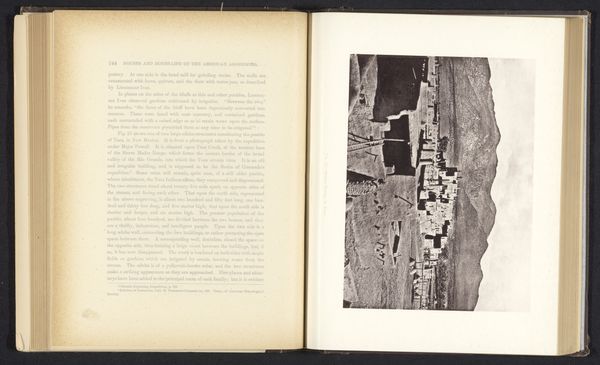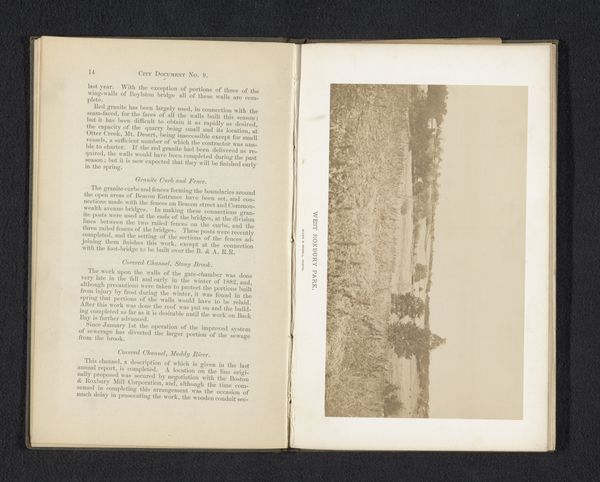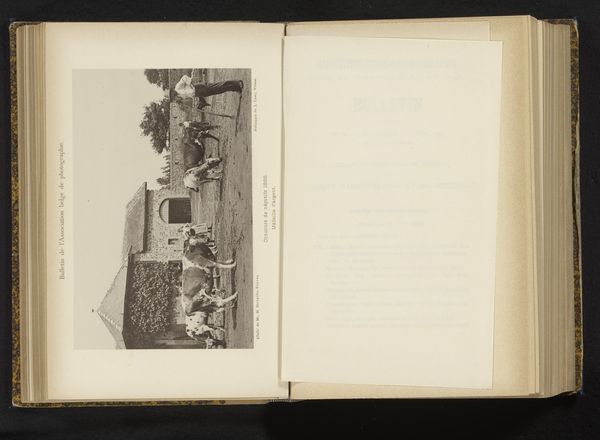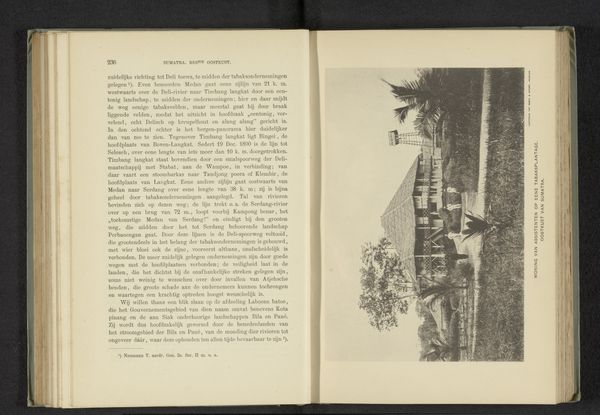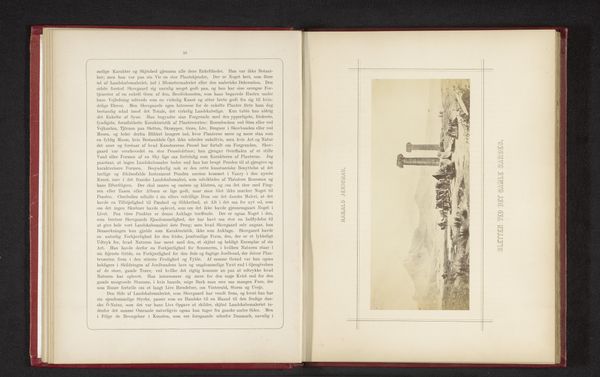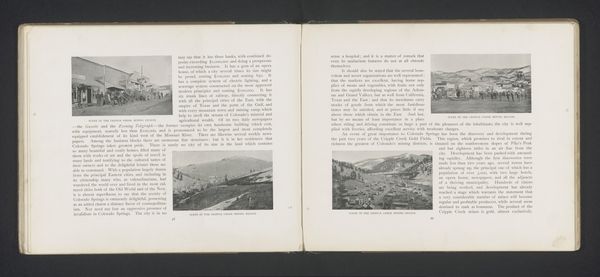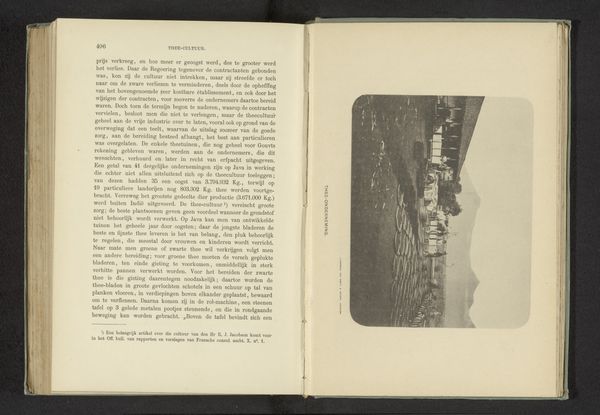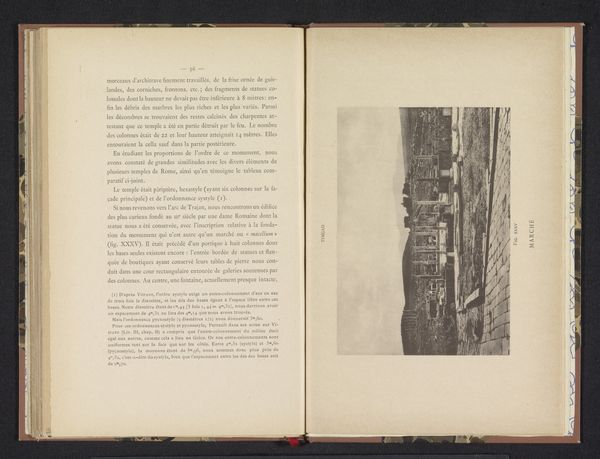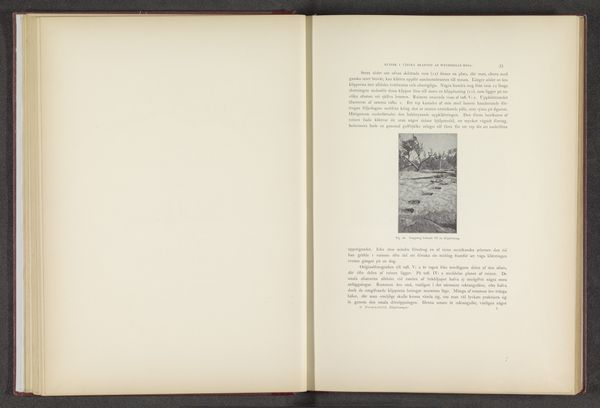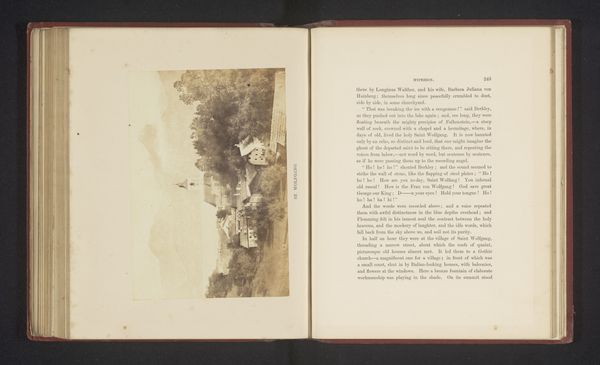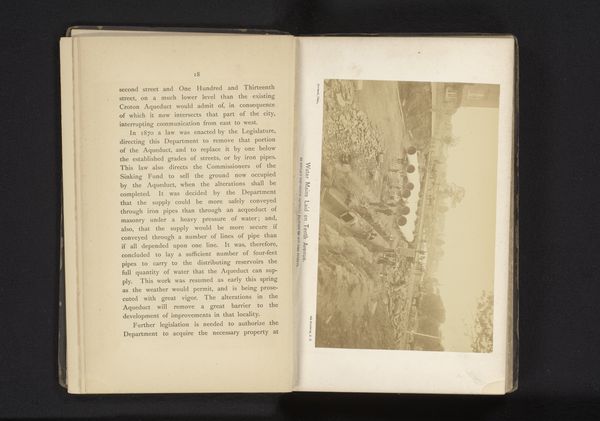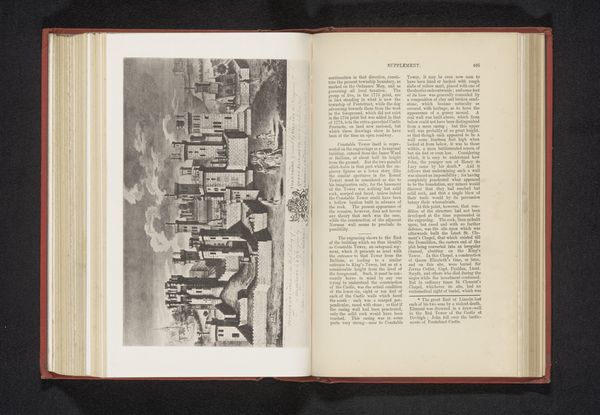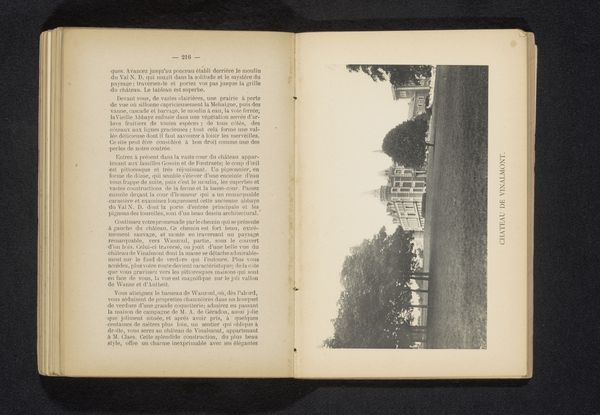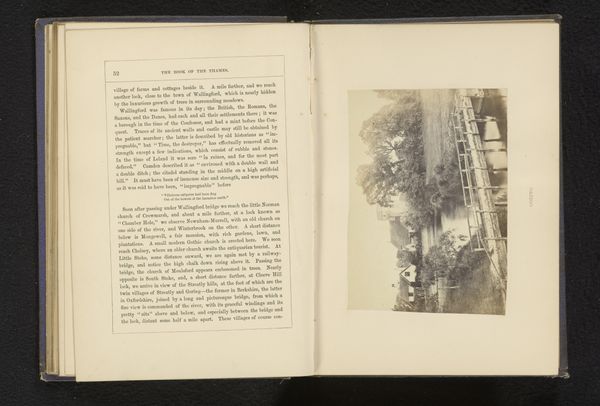
print, photography, albumen-print
# print
#
landscape
#
photography
#
albumen-print
Dimensions: height 116 mm, width 168 mm
Copyright: Rijks Museum: Open Domain
Curator: At first glance, this photograph is dominated by vertical architectural forms pressing against the top edge; it feels heavy and imposing, even though it's contained in the neat little book. Editor: This is an albumen print titled “Gezicht op Andernach,” which translates to “View of Andernach,” taken by Francis Frith, likely sometime before 1865. It resides in the Rijksmuseum’s collection. The book itself suggests its likely function in early photographic travelogues. Curator: The choice of the albumen process is crucial here. It gave Frith incredible detail and tonal range, perfect for capturing the architecture with sharp precision, also, the mass production of the print through photographic technology marks a real shift in accessibility. Editor: Absolutely. And we must think about audience reception. Frith made these images during a period when photography was still gaining widespread acceptance as art. Presenting it bound in a book aimed it towards a leisured class eager for visual experiences of travel made accessible to the burgeoning middle class, shaping not just artistic consumption but visual culture more broadly. Curator: Indeed. The very act of capturing and then printing this scene speaks to broader narratives about power and knowledge at that historical moment. Travel was deeply connected with commerce, trade and politics in Europe in the 1860s, Andernach was on the Rhine; this image offered more than simply a vista for consumption, but a marker of status. Editor: It's fascinating how these seemingly simple photographs participate in constructing social realities through both their aesthetic qualities and how they’re disseminated and used. Consider this—the image might have strengthened certain cultural or political ties through tourism to the city or just to the Rhineland region, boosting the local economy as new tourists were interested in exploring the sites showcased. Curator: And to think, what appears to us as simply a vintage landscape was actively contributing to larger economic systems, promoting an age of commerce and global travel, its albumen print material object serving not just as art, but propaganda. Editor: These historical imprints of early photography open a world of history. Curator: Exactly. Materially they serve to allow that historical lens through into modernity.
Comments
No comments
Be the first to comment and join the conversation on the ultimate creative platform.
